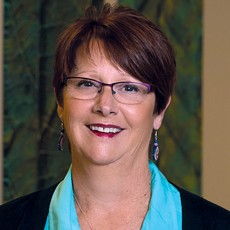
It’s not news that our planet has a serious antibiotic resistance problem on its hands, or that better antibiotic stewardship across the health care spectrum is essential to solving it.
We’ve heard the alarming statistics over and over, but as the crisis grows, they bear repeating:
- Up to 70% of nursing home residents receive antibiotics each year, according to the Centers for Disease Control and Prevention (CDC).
- Up to 75% of all antibiotics given to them may be inappropriate or unnecessary.
- At least 20% of all adverse drug events in nursing homes are due to antibiotics.
- The C. difficile infection alone affected 453,000 people in 2015, and 29,000 of them died, with billions in associated costs to healthcare facilities.
- No new antibiotic classes have been discovered in the past 30 years, and we’re rapidly running out of weapons.
As a long-term care profession, and particularly as nurses and pharmacists, we’ve been concerned about this for a long time, even before we had that Nov. 28, 2017 Phase 2 Mega-Rule deadline breathing down our necks. It’s a critical cause with implications far beyond paperwork and penalties, one that goes to the heart of what we do and why.
So as facilities scramble to get antibiotic stewardship programs in place, the challenge isn’t so much how to comply with regulatory changes—though that’s obviously important. It’s how to work together as an interdisciplinary team to not only keep our patients safer, but to preserve the effectiveness of these life-saving drugs for future generations.
Stewardship—a sobering responsibility
It sounds obvious, but the key word is “stewardship,” a term we hear tossed around so much we probably don’t spend enough time really thinking about. By dictionary definition, it means “the careful and responsible management of something entrusted to one’s care.”
That’s how we see antibiotics, as a vital, often life-saving tool we’ve been entrusted to protect and preserve. There are only so many ways to kill bacteria without harming the patient, and every time we use antibiotics, drug resistance increases. So it’s up to us to do our part in helping avert the cycle.
We’re all very familiar with the seven core elements the CDC has identified to achieve antibiotic stewardship in nursing homes — leadership commitment, accountability, drug expertise, action, tracking, reporting and education. Combined and implemented, they create an optimal environment to fulfill our most important stewardship responsibility of all — of our patients.
Pharmacy and nursing — a vital partnership
In our consulting roles within client nursing facilities, we’ve managed to achieve significant antibiotic stewardship success by putting special focus on one core element in particular — action. That’s where the expertise and synergy between consultant pharmacists and nurses can create an ideal potential partnership. In collaboration, we’ve improved processes and empowered nurses with the information necessary to help prescribers make more informed choices.
The foundation of that success in the facilities we serve comes from the creation of an extremely robust custom assessment tool based on the Revised McGeer criteria. It lives within the electronic health record, and has eliminated the need for busy nurses to refer to resource material often inconveniently stored on a shelf somewhere. Upon completion, a structured progress note can be created, and this wealth of enhanced assessment information helps guide future pharmacist recommendations and prescriber decisions.
As signs and symptoms communicated by nurses are the basis for the majority of diagnosis and treatment plans, nurses are the front-line warriors in the battle to influence prescribing habits and reduce antibiotic use. Newly empowered with instant access to a more thorough and accurate assessment, they’re able to communicate it directly and clearly to the prescriber, many times right on the phone where most of these conversations occur.
When the important stage comes in any antibiotic regimen for a time-out — an essential pause and reassessment by nursing staff, consulting pharmacist and prescriber — that wealth of newly available assessment information helps answer the truly critical questions. Does this patient have an infection that will respond to antibiotics? If so, is he or she on the right one, at the right amount for the right length of time? Can a more targeted antibiotic be used
As a profession, the new antibiotic stewardship requirements bring a renewed commitment to asking those questions of every patient and prescription, and better assessments help everyone involved get to the best answers possible.
The most important stewardship
Obviously, creating the right assessment tool within the daily processes you’ve established is only one part of what must be a broad and all-consuming antibiotic stewardship program. But we believe the best way to ensure antibiotics are used more appropriately and judiciously is to influence prescriber habits by providing the best assessment information available, and nurses and consultant pharmacists are vital to making that happen.
Within the world of long-term care, we’ve each been entrusted to help optimize the treatment of infections while reducing the adverse events associated with antibiotic use, and we’re being counted on to do everything possible to preserve these vital weapons for future use.
But our ultimate stewardship responsibility is for the lives of our patients and residents, which for most of us is the real reason we do this.


William Davids is a stewardship-trained consultant pharmacist with Consonus Healthcare.
Vicki Nordby is a nurse consultant with Marquis Companies.
For more information on antibiotic stewardship please visit: www.consonushealth.com/pharmacy/medication-management-system




